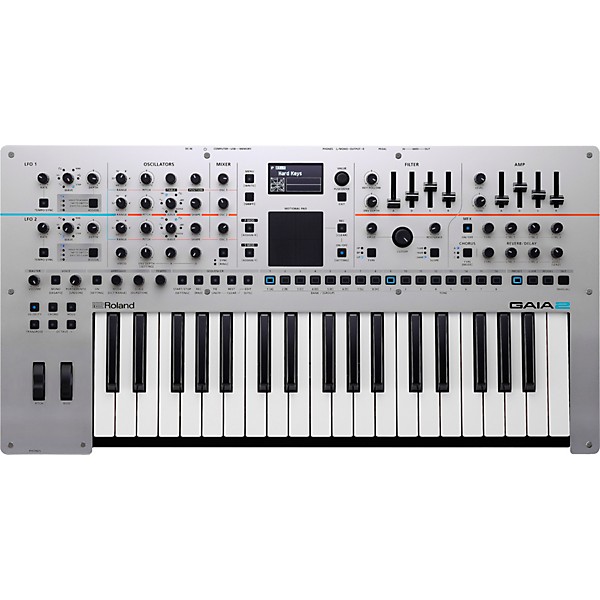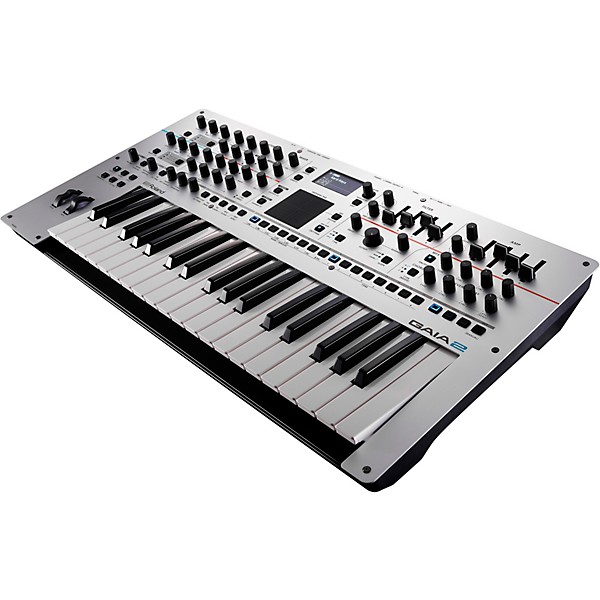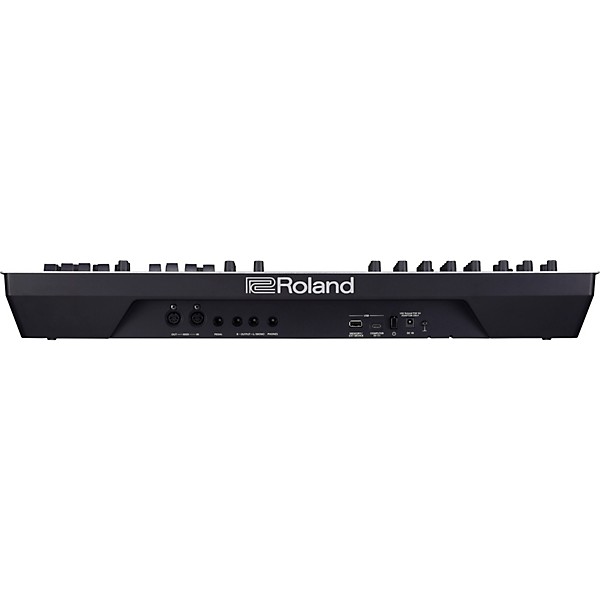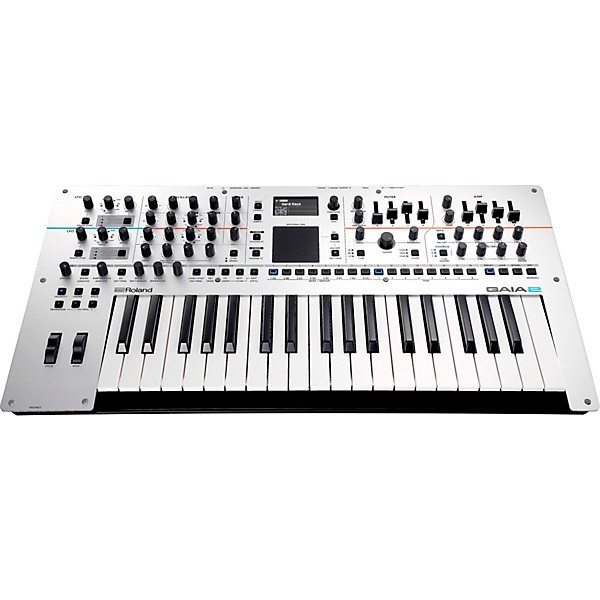- Popular Brands
Roland GAIA 2 Advanced Virtual Analog Synthesizer
Videos (3)
View All

Roland GAIA 2 Synthesizer Overview


Roland GAIA 2 Synthesizer Performance


Roland GAIA 2 Advanced Virtual Analog Synthesizer

 Description
Description
Since its founding in 1972, Roland has created some of the world's most iconic synthesizers. The Roland GAIA 2 continues in that tradition, creating a powerful hybrid synth engine that combines multiple sound generation engines. Designed for even novice synthesists to quickly learn synthesis and sound design basics, while providing enough creative power to satisfy even the most experienced user, the GAIA 2 will be your musical partner in creating and exploring new sonic frontiers.
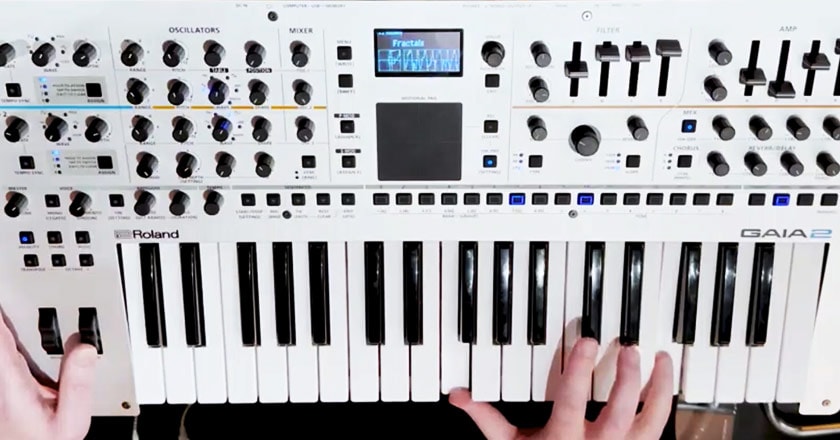
Powerful Engines Plus Historic Sounds
Combining different types of synthesis in a hybrid engine makes for a perfect example of the whole being greater than the sum of its parts. The Roland GAIA 2 brings together a pair of virtual analog oscillators with a wavetable oscillator to create complex, dynamic sounds that couldn't exist with a single engine. The wavetable oscillator offers a huge array of waveforms, with powerful morphing and shifting capabilities that add depth, texture and contrast. The dual virtual analog oscillators provide the classic synthesis tools that enable you to recreate the sounds and vibe of the most iconic synths, with the freedom to dive in and build totally new sounds from scratch. The easily assignable modulation routings make for faster sound creation and tweaking. The GAIA 2 also supports Roland Model Expansions—a feature that enables you to load a library of classic synths from Roland's history, like the SH-101, JUPITER-8 and JUNO-106, and then use GAIA's deep control features to reimagine and deconstruct those sound to your individual ear.
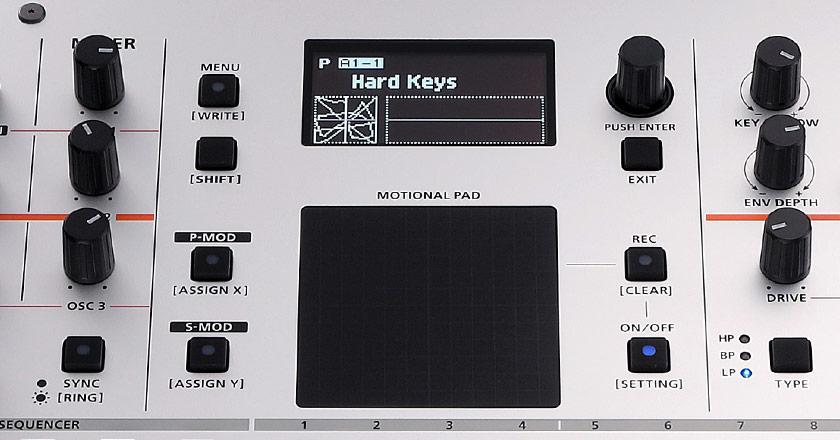
Flexible, Expressive Controls
Speaking of control, GAIA 2 has it in spades. There's no substitute for the tactile feel of dedicated knobs, faders and buttons that you can reach out and grab. They provide instantaneous feedback and the ability to shift the sounds in subtle, or not so subtle, ways while you play. Unique control features like Roland's Motional Pad add real-time expression and movement to sounds and effects. The built-in sequencer captures it all, as you play or use step-recording mode on the full-size, premium-action, 37-key keyboard. A high-contrast OLED display provides visual confirmation of all your choices and control movements, as well as providing a clear roadmap to your sound design path.
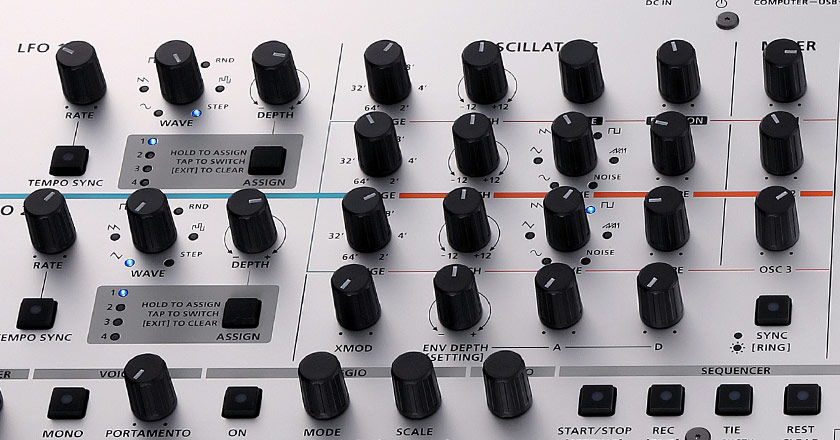
Effects That Trigger Creativity
Roland has long been known for effects, and the GAIA 2 is loaded up with 53 unique effect types and dedicated chorus and delay/reverb sections that include many or their most desirable ones. From the lush and deservedly well-known JUNO Chorus to Shimmer and Modulation reverbs, once you've created a sound, you can swaddle it in the perfect effects to make it stand out and cut, or lay back in an ambient wash.
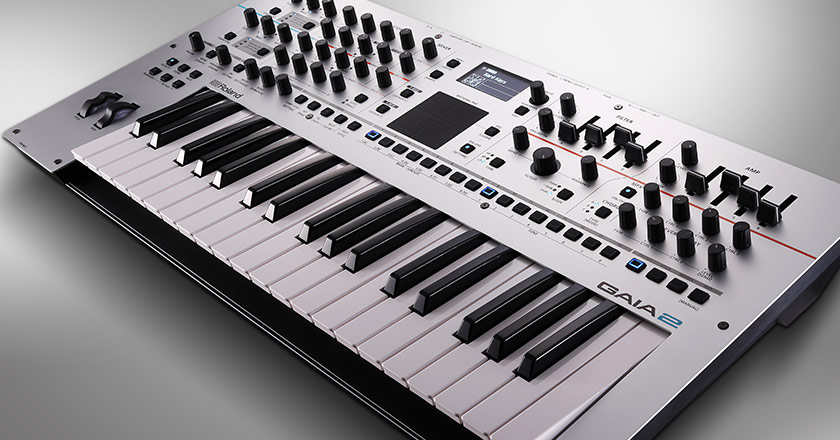
Easy, Versatile Connectivity
With a class-compliant USB-C port, the GAIA 2 connects quickly and easily to computers, tablets or phones functioning as an audio/MIDI interface. That same port also supports Roland's AIRA link for communication with Roland AIRA devices, enabling you to build out a fully connected sonic workstation. There's also a USB Type-A port, for hooking external MIDI controllers or USB flash drives. So, however you want to connect, it's right there.
Synthesizers are fun—big fun—and every musician should have one in their sonic arsenal. So, whether you're looking to add a powerful, versatile synthesizer to your setup, experiment/play with creating new sounds, or even just develop a deeper understanding of how synthesis works, the Roland GAIA 2 is the perfect addition to your musical world.
 Features
Features
- Newly developed hybrid sound engine with one wavetable oscillator and two virtual analog oscillators
- Freely assignable modulation routings for fast sound creation
- Motional Pad for adding real-time movement and expression to sounds
- Sequencer with real-time and step-recording options
- MFX section with 53 unique effect types
 Specs
Specs
- Number of keys: 37
- Key size: Full
- Polyphony (max): 22 voices
- LFO: 2
- Included presets: 256
- User preset slots: 512
- Output: Stereo
- MIDI Connectivity: In/Out
- Line input:
- USB Connectivity: Type-C and Type-A
- Headphone out: Yes
- Pedal Inputs: 2
- Sequencer: Yes
- Arpeggiator: Yes
- Display: OLED
- Effects: Yes
- Pitch bend/Modulation: Both
- Width: 25.81"
- Height: 3.625"
- Depth: 13.25"
- Weight: 9.75 lb.
- Power: External/USB bus powered
Featured Articles
 Reviews
Reviews
5
2 Reviews
100%
of respondents would recommend this to a friend
- Electronic Music2
- Accompaniment1
- Concerts1
- Learning1
- Travel1
- Experienced1
- Professional Musician1
- Easy to Use2
- Touch Sensitive Keys2
- Good Audio1
- Portable1
Reviewed by 2 customers
This is a cool synth
submitted10 months ago
byJT
fromHouston, Tx.
I bought one of these, because I wanted to get back programming sounds without having to do a ton of menu diving.. Despite what the q and a tech said, it IS, in fact, POLYPHONIC!!! 22 notes max, to be exact!! An SH101 with so.e serious enhancements!!! I'm still learning this thing, but I've created some seriously rich ambient pads with this thing... With the choruses and reverbs, the hold button and motion controls, I can create some awesome background effects with it!!! Not something I expected, when I bought it...Roland nailed it with this baby!!
A Welcome Addition to the Roland Family
submitted2 years ago
byTom
fromSilver Spring MD
The Roland Gaia 2 is a welcome addition to the family of Roland synths. It sounds very modern and to my ears is literally always better sounding in its rich unison mode. The setup of one wavetable oscillator with two standard virtual analog oscillators is a novel design but propels creative thinking. It's almost always useful to use the unison mode over subtle detuning of the oscillators instead creating intervals & injecting high or low harmonics over the principal tone. I like the sound of the synth so much that I consistently forgot to program the tone knob but to my ears it doesn't make as much of a sonic impact as on all the Roland Cloud Plug Out synths I've programmed. This thing sounds modern & great at so many settings. Definitely using the P-mod & S-mod settings is almost always a must when using the wavetable oscillator & don't forget to select the S-mod tables as these all impact the harmonics with a lot of variation. The synth is laid out very intuitively & although the synth is boasted as knob per function it is not. The menus for making fine adjustments or accessing other parameters are well laid out & only have one sublayer for each section. The filters are all quite pleasing & have their strengths for different applications. The drive circuit is really crucial in this synth & I especially enjoyed setting my drive by cranking the resonance & bringing in the drive to tame the resonance. The effects are pretty great but I opted to literally always program a notch filter in the multi effect slot as to be a second filter since notching sounds is so incredibly important. It is a miss that the chorus insert isn't switchable to a phaser or flanger but it delivers more consistency & with the unison mode the chorus isn't always necessary. The reverb options are a nice inclusion but almost always require lower wet & time levels. This causes sounds to sound big without sounding wet & reverby. The LFOs aren't as fast as I'm used to but all this does is prevent from making more aggressive analog FM type sounds. Having four destinations for each LFO is excellent & the necessity to do each oscillator's pitch mod independently results in more thoughtful programming. Being able to select destinations for each LFO modulation slot right from the control panel is a dream & I hope other synth manufacturers follow suit. I've overlooked the x-y pad programming opting to leave it at its default cutoff & resonance modulation routings. I wouldn't use this myself & would probably always prefer to control in real time with the knobs. The keys feel very natural for synth action. Velocity responds as expected & the limitation of modifying cutoff resonance & pitch envelope amount along with the default of volume with velocity is actually a strength. Definitely rolling off your attacks & decays for envelopes sounds best on this synth. While it's nearly always important on any synth to have a somewhat soft attack & decay on an amp envelope to prevent unpleasant clicks except when using a gate to access an envelope for additional modulation, this synth actually sounds best when using even subtle settings of filter attack even when you would assume you don't need it. With the mod envelope you don't need the attack when doing pitch sweeps but with modifying things such as the wavetable position it helps too. The sequencer is great with various timing subdivisions & up to 64 steps. My ONLY complaint is the lack of a tap tempo function. I think this should probably be an inclusion of every synth with a sequencer. I would call this synth's sound in my applications unison smear. The Gaia 2 is charming & modern and while it has a sound that won't be right for all applications it will definitely compliment a track in so many ways when choosing the perfect sound.
- Previous
- 1
- Next
 Q&A
Q&A
Have a question about this product? Our expert Gear Advisers have the answers.
submitted2 years ago
asked byMark
fromMetairie,LA
Is it polyphonic
No, the GAIA is mono.


